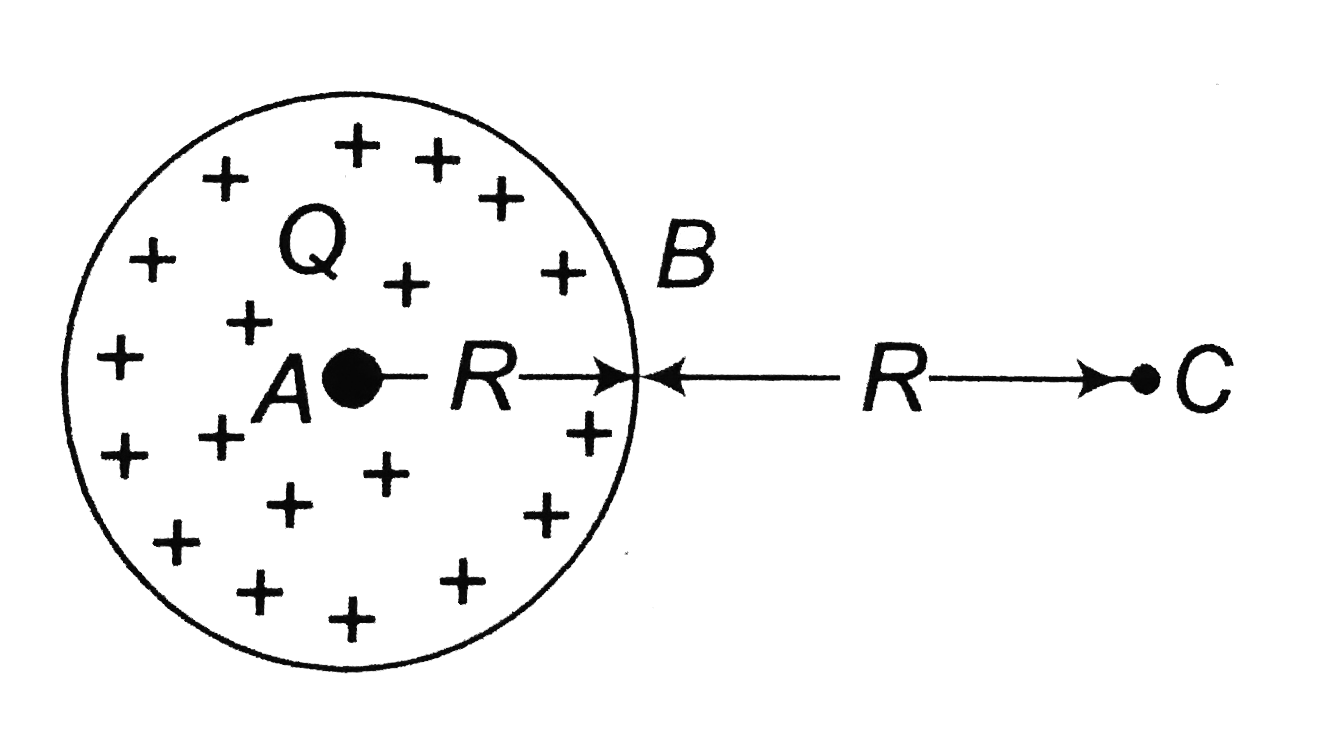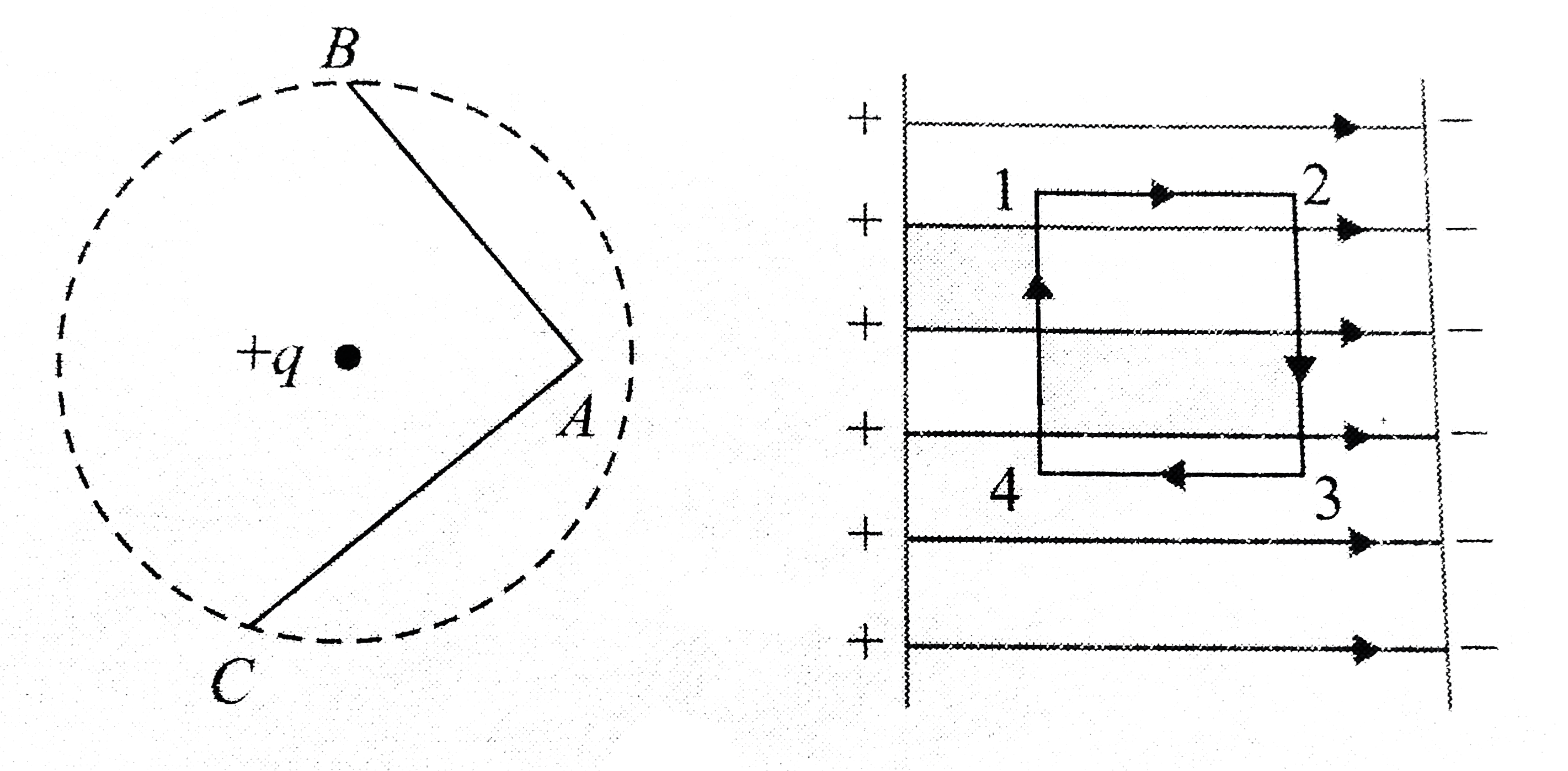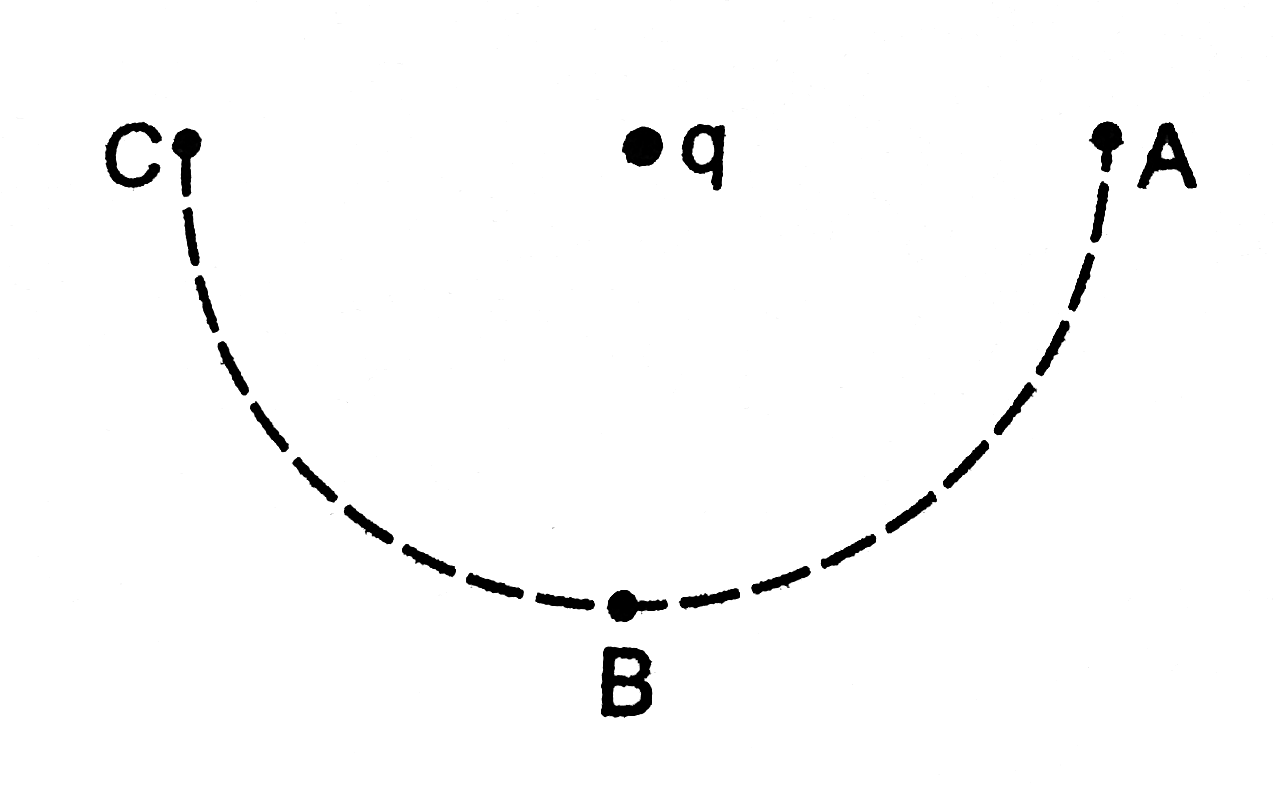Find the ratio of electric work done in bringing a charge q from A to B(WAB) and that from B to C(WBC) in a sphere of charge Q distributed uniformly throughout its volume.

1
1.5
0.75
None of these
The correct Answer is:A
Work done by electric field
WAB=q(VA−VB)
=q[3Q8πε0R−Q4πε0R]
=Qq8πε0R
WBC=q(VB−VC)
=q[Q4πε0R−Q8πε0R]
=Qq8πε0R
⇒WABWBC=1
Topper's Solved these Questions
- BOOK - A2ZCHAPTER - ELECTRIC POTENTIAL & CAPACITANCEEXERCISE - Assertion Reason8videos
ELECTRIC POTENTIAL & CAPACITANCE
- BOOK - A2ZCHAPTER - ELECTRIC CHARGE, FIELD & FLUXEXERCISE - Section D - Chapter End Test29videos
ELECTRIC CHARGE, FIELD & FLUX
- BOOK - A2ZCHAPTER - ELECTROMAGNETIC INDUCTIONEXERCISE - Section D - Chapter End Test30videos
ELECTROMAGNETIC INDUCTION
Similar Questions
Knowledge Check
- Question 1 - Select One or More
A rubber balloon is given a charge Q distributed uniformly over its surface. Then
Aelectric field may be there inside the balloonBelectric field will be there inside the balloonCelectric field may be constant inside the balloonDpotential may be constant inside the balloon - Question 2 - Select One
The work done in taking a unit positive charge from P to A is WA and P to B is WB. Then
 .AWA>WBBWA<WBCWA=WBDWA+WB=0
.AWA>WBBWA<WBCWA=WBDWA+WB=0 - Question 3 - Select One
The work done in bringing a unit positive charge from infinite distance to a point at distance x from a positive charge Q is W. Then the potential ϕ at that point is
AWQxBWCWxDWQ
A charge +Q is lying at the center of a circle. What is work done in carrying charge q from A to B, where A and B, both lie on the circle.
View SolutionFind the electric field at an arbitrary point of a sphere carrying a charge uniformly distributed over its volume.
View Solutiona. A circle is drawn with center as a charge +q. What is the work done in moving a charge +q from B to C along the circumferebce of the circle ?
B In the above question, if the charge +q is first taken from B to A and then from A to C, on which path is the magnitude of work greater ?
 .View Solution
.View SolutionFind the work done in the bringing a charge q from perpendicular distance from the line of charge .
A device X is connected an ac source of voltage V=V0sinωt. The current through X is given as I=Issin(ωt+π2)View SolutionA nonconducting sphere with radius a is concentric with and surrounded by a conducting spherical shell with inner radius b and outer radius c. The inner sphere has a negative charge uniformly distributed throughout its volume, while the spherical shell has no net charge. The potential V (r) as a function of distance from the center is given by
 View Solution
View Solution


 .
.